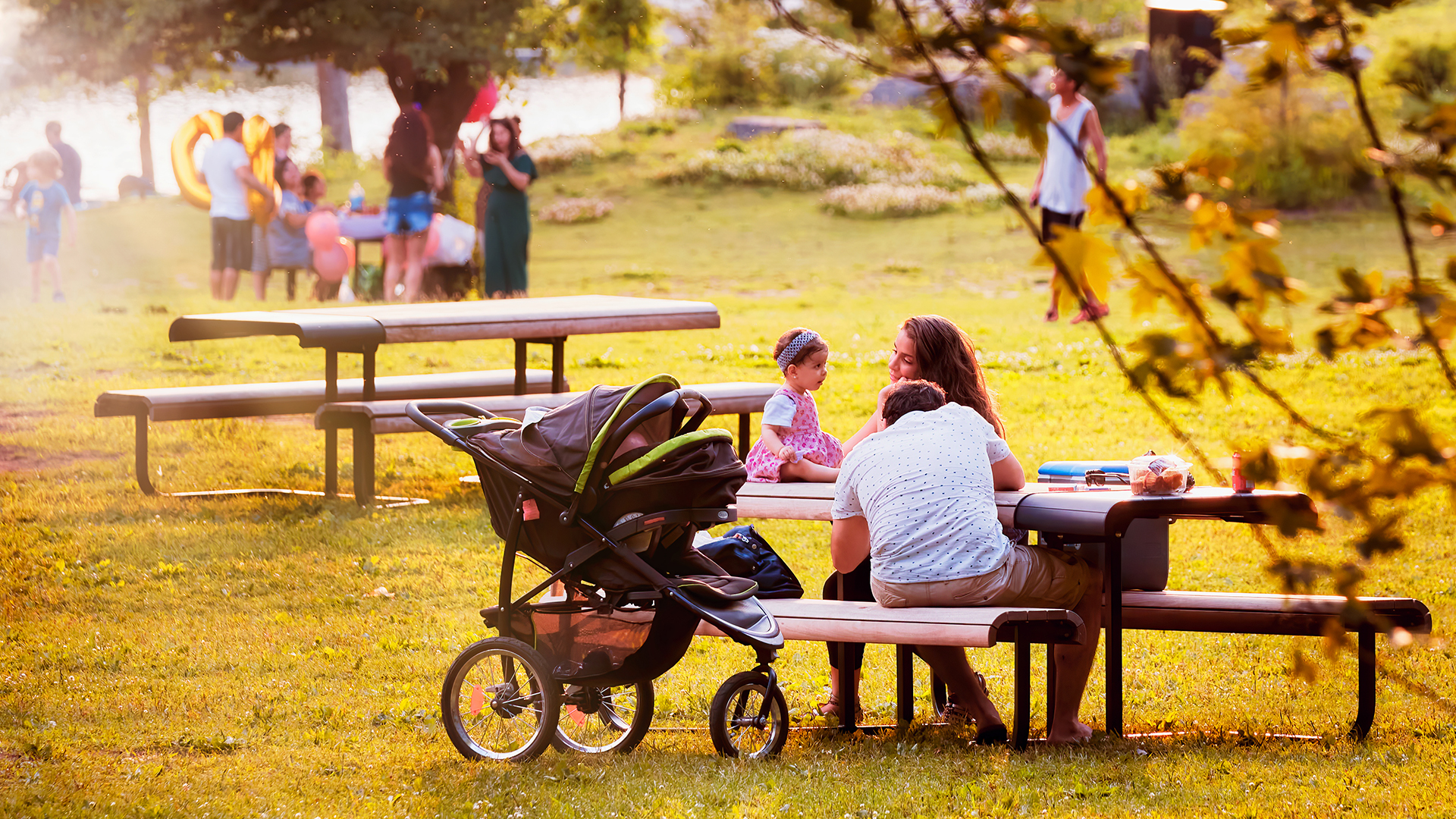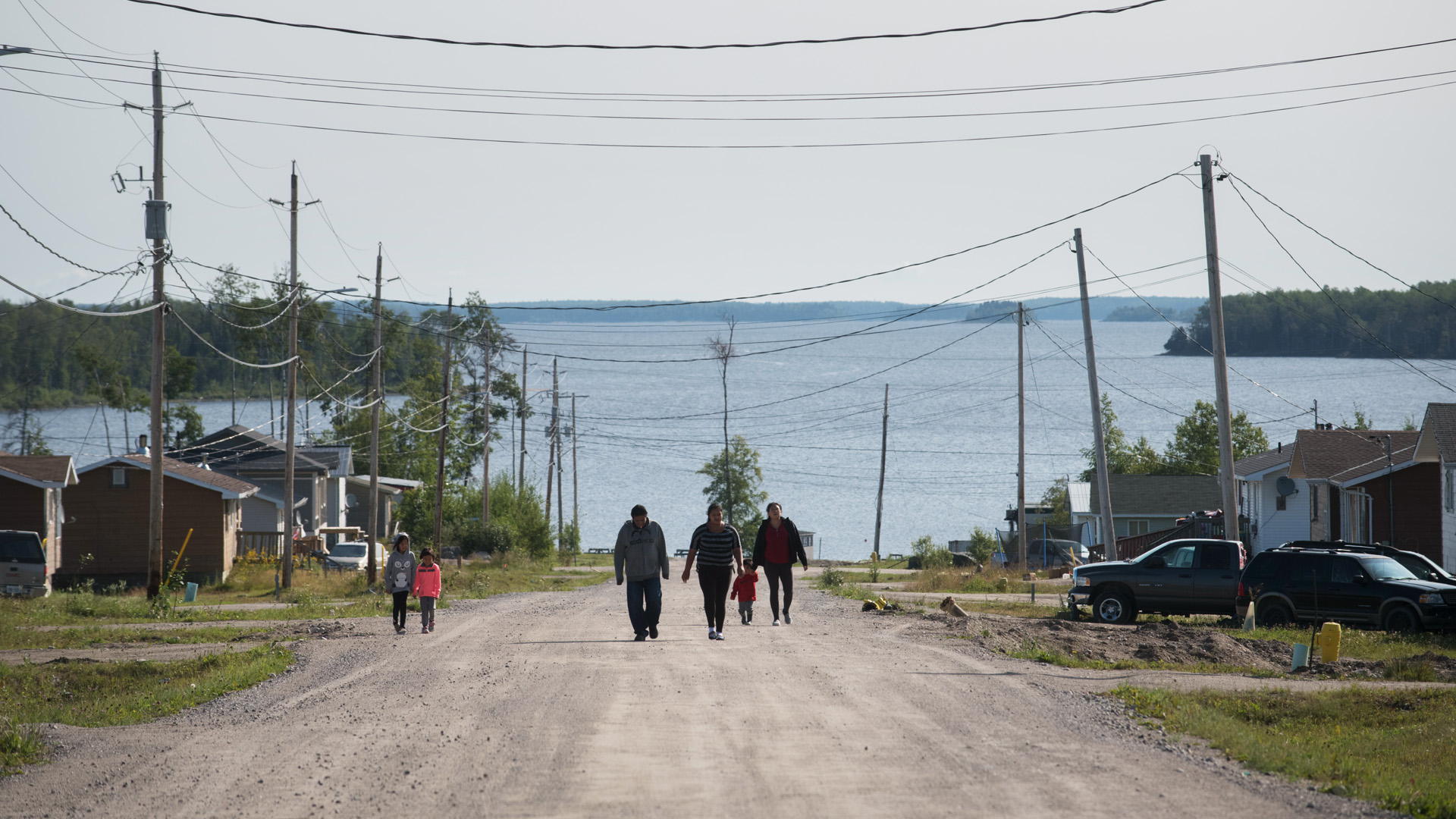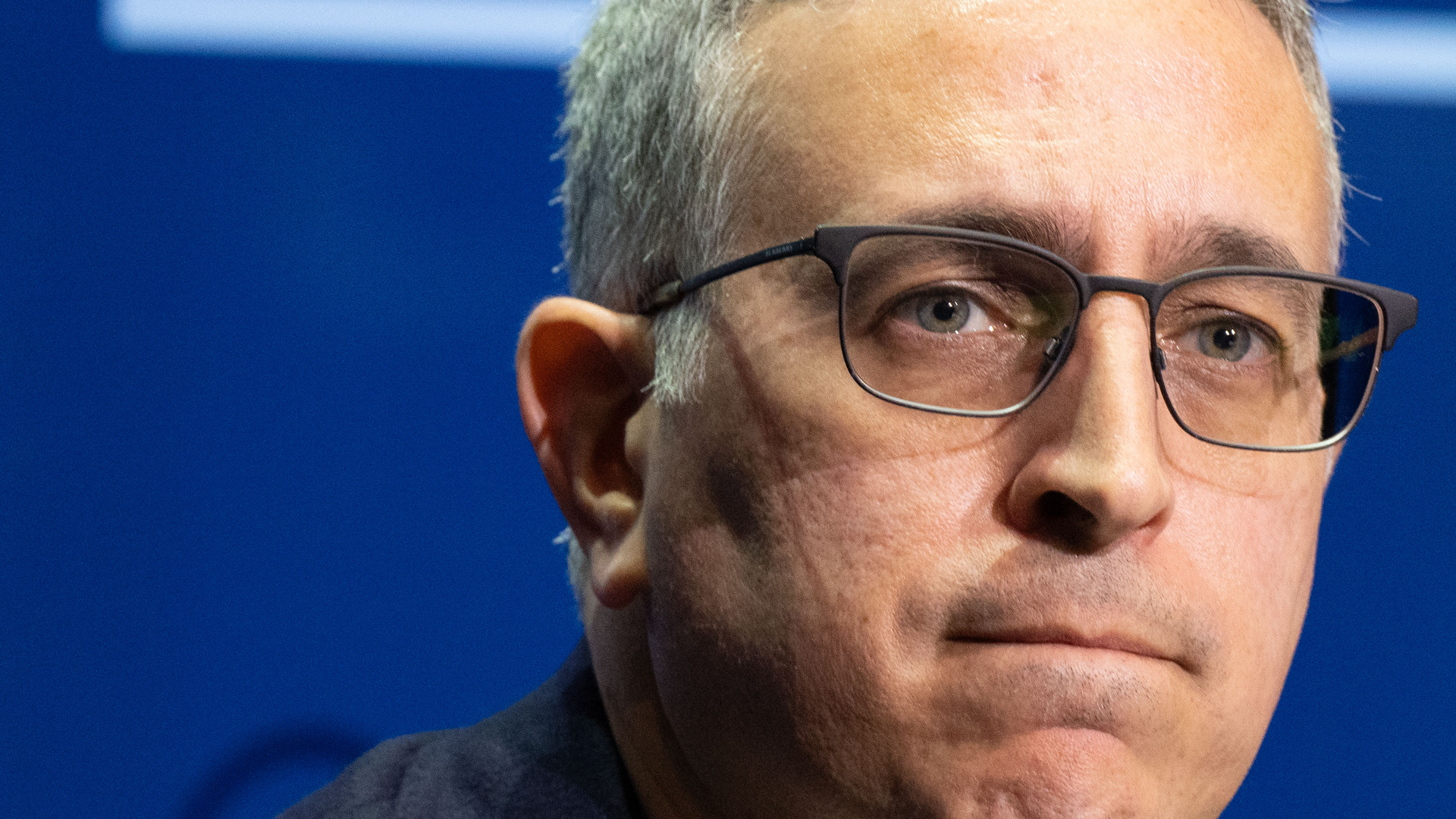
In the beginning, September 11, 2001, or 9/11, as it is now known, had an impact on virtually every Canadian. There was a mixture of shock that a terrorist strike could occur so close to home, grief over the loss of loved ones in the World Trade Center, the Pentagon or on board the four aircraft involved, and an outpouring of emo- tional support for the United States as it was reeling from the terrorist blow. Instant hospitality and care were extend- ed by individual Canadians and their families to the 33,000 passengers (most from the United States) on 226 aircraft diverted to Canada.
Canadian Forces officers who happened to be in ”œcom- mand chairs” at the North American Aerospace Defence Command (NORAD) were involved within seconds after the first attack. They took control as the details of the attack emerged, scrambled interceptors that were airborne within six minutes of the order, and cleared all North American air- space. Their actions may well have contributed to prevent- ing further incidents that day.
At the same time, the 9,000-kilometer Canada-U.S. bor- der, with its 147 border-crossing points, became effectively sealed as an anti-terrorist measure, and the thousands of just-in-time commercial deliveries crossing daily in both directions were slowed to a snail’s pace, bringing automo- bile and other manufacturing in southern Ontario and adja- cent states to a near standstill. Airlines in Canada and the United States””indeed across the world””were hit when flights within and to North America were curtailed and hun- dreds of thousands of reservations and holidays were can- celled. Many affected individuals and enterprises pleaded for urgent government assistance to cover massive losses. And some enterprises, unable to survive, soon ceased oper- ations and ultimately were sold or merged with others.
Governments in Canada offered immediate assistance to the Americans. Hospitals in Toronto, Montreal and other centers were cleared to receive victims before it became known that there were not a large number of survivors needing hospital care.
A few days later, at a national ceremony held on Parliament Hill in Ottawa, an estimated 100,000 persons gathered as an act of sympathy, remembrance and solidari- ty with the United States. And when the War on Terrorism was declared by President Bush, a substantial Canadian Task Force of patrol frigates and destroyers, transport aircraft, elite special forces troops (JTF-2) and an infantry battle group was organized and contributed to the growing coali- tion formed to fight the al-Qaeda and Taliban forces in Afghanistan. That meant the already overstretched Canadian Forces were stretched further.
When the terrorists struck on September 11 and in the days that followed, many Canadians and Americans felt personally vulnera- ble for the first time in their lives. National securi- ty was now national insecurity for many, and as a result we began to examine the causes, the effects and the adjustments that needed to be made in our daily lives. In the United States, homeland security and homeland defence were moved to the front burner. In Canada, John Manley was named minister for public security and high-level discus- sions commenced with the new director of Homeland Security in the United States, Tom Ridge, on common security measures including border management. The border issue became a focal point of those discussions as early””and erro- neous””reports claimed that some of the terrorists who took part in the September 11 attacks had entered the United States via Canada.
Polls taken immediately after the attacks reflected massive support by Canadians for mili- tary action in Afghanistan””even for increased spending on the armed forces. Some 80 per cent of Canadians polled indicated acceptance of mandatory fingerprinting and identity cards for all Canadians””most would even accept the tap- ping of their phones or screening of their mail”” and measures against new immigrants. The Canadian government, sensing the public mood and the urgent need for action, quickly drafted new legislation to deal with a changed domestic security environment. A new Anti-terrorism Act (Bill C-36) was passed in December 2001, and a Public Safety Act (Bill C-46) was given first reading in November 2001, although later withdrawn for amendment as the reaction tempo slowed.
The deployment of the infantry battle group offered to the coalition””3rd Battalion, Princess Patricia’s Canadian Light Infantry (3 PPCLI) from Edmonton””was delayed until after Christmas so that its role could be clarified. Then, further delays exposed, among other things, Canadian weakness because we lacked independent strategic air and sealift capabilities. When finally deployed to Kandahar Airport, the 3 PPCLI battle group demonstrated to their U.S. colleagues and senior commanders that they were, and are, superbly capable. However, the loss of four of their number and the wounding of eight others due to an acci- dental bombing during a training exercise on April 18 evoked an overwhelming national response. There were services of recognition and remem- brance never before seen for individual Canadian Forces personnel killed in the line of duty at home or abroad. Whether this over-the-top reaction was a reflection of some guilt on the part of the gov- ernment, some anti-American sentiment because the casualties stemmed from an American pilot’s attack, or simply a genuine outpouring of support and respect for those fighting a war, was the sub- ject of muted media discussion.
By June 2002 opinions had changed. A Pollara poll indicated that 77 per cent of Canadians did not believe a terrorist attack would occur in Canada and only 14 per cent thought such an attack was likely. Clearly, as pollster Michael Marzolini said, Canadians had recovered from the shock of September 11. The new priorities were again the old priorities””health care, high taxes and government spending. Sensing this change, the government withdrew the Public Safety Act for modification.
This reversal was in sharp contrast to the atmosphere in the United States. ”œThat country is still at war, with a similar resolve to what Canadians were experiencing in late November. We have recovered from the shock, they haven’t. They are still looking nervously over their shoul- der, while we doubt that terrorist attacks would ever happen here,” Mr. Marzolini wrote. A July COMPAS poll revealed that 75 per cent of those questioned thought that some kind of terrorist attack on North America was likely over the next few years, but only 33 per cent of those ques- tioned thought that Canada was a likely target.
The realism of this Canadian view was chal- lenged by John Thompson of the MacKenzie Institute, who was quoted as saying that Canadians have fooled themselves into thinking that the war is over because they want to believe Canada is ”œa peaceful kingdom and we have no troubles.” He added: ”œI’ve got news for Canadians …we’re up to our necks in terrorism and always have been. We’ve had embassies taken over, diplomats shot, bombs here and, of course, al- Qaeda was planning on setting off fuel tankers inside Montreal.”
With Canadians beginning to relax within a booming economy and showing little fear of ter- rorism, Canada’s contribution to the coalition war on terrorism was sharply reduced with the return of the infantry battle group and a pullback in the size of the naval task force, all because the Canadian Forces are stretched beyond a sustain- able limit. Their original deployment was popular, however, according to the June poll, with more than 75 per cent of Canadians supporting the war on terrorism as a ”œjust war,” and almost 75 per cent still supporting some increase in spending on defence and domestic security.
So, where does Canada find itself as we approach the first anniversary of September 11? Issues developing in several areas are significant- ly affecting our relations with the United States.
-
In the United States, in the months after September 11, the need for a single U.S. military commander to oversee homeland defence became clear, leading to the creation of a new Northern Command (NORTHCOM), ultimately to include all U.S. Forces dedicated to the defence of North America. The nomination of the current Commander in Chief NORAD, U.S. Air Force General Ralph Eberhart, as the Commander in Chief NORTHCOM has led to serious questions concerning Canada’s relationship to NORTHCOM and the future of NORAD itself. This relationship becomes even more important as it appears that U.S. Space Command (SPACECOM) will come under NORTHCOM, as will the pending and con- troversial Ballistic Missile Defence (BMD) system.
For some observers, this development is seen as seriously threatens Canada’s role in coopera- tive North American defence. Persistent opposi- tion to any notion of BMD deployment in some quarters has failed to take into account the fact that the United States will proceed to deal with its defence concerns in accordance with its own interests. Canadian participation may be wel- come””indeed essential in General Eberhart’s view””but it will necessarily involve Canadian contributions that will be recognized as signifi- cant and relevant, though it is not clear what they may be. But if Canada is shut out, for what- ever reason, the impact on our sovereignty and sovereign decision-making could be incalculable.
It is in Canada’s vital interests to survive as an integrated political and economic sovereign state. Sovereignty includes the capability to be aware of and to control activities within the sov- ereign jurisdiction of the state, its airspace and its maritime approaches. The capacity to maintain surveillance over Canadian territory is currently integrated with the NORAD system. Loss of that capacity would indeed affect Canada’s sovereign capability. It is also a vital interest to defend the homeland against those elements which could conspire to disrupt, diminish or destroy the state, its physical assets or its citizens, including their economic well-being.
Sovereignty also includes the capacity for decision-making in the sovereign interests of the state. If the United States were to decide to devel- op Northern Command to include all of its land, sea and aerospace defence needs without the inclusion of Canada, Canadian sovereignty would most certainly be affected. Therefore, credible and effective military capabilities that can be integrat- ed with those of the United States in any North American defence entity will be essential to the preservation of Canadian sovereignty. This chal- lenge, although already seen in the BMD debate, was intensified as a result of September 11.
-
Similarly, border security is a vital inter- est to Canada, given the economic dependency on cross-border trade with the United States. Canada cannot be seen to have any border or entry point””sea or airport””which could be an easy route for subsequent entry to the United States, because that could lead to major and eco- nomically punishing border controls. While sub- stantial progress has been made in improving access for routine travel and goods transportation at major crossings, including Canada-U.S. cus- toms co-manning of major seaports, there is still the matter of surveillance of the almost 9,000 kilometers of water and trackless land border.
-
Border surveillance is also closely linked to the need for appropriate and improved security intelligence. The degree to which the September 11 events were the result of an intelligence failure, whether minor or major, is the subject of continu- ing investigation within the United States govern- ment. There already appears to be a consensus that on the analytical side of the intelligence commu- nity””strategic intelligence analysis and interpre- tation””there is a weakness. Efforts are restrained by the need for well-educated and skilled analysts, and the labour-intensive””that is to say, expen- sive””character of the work. This may not be the most intriguing aspect of intelligence, but it even- tually becomes the essential foundation. Filling this gap means developing and maintaining a cadre of specialists in the economics, politics and cultures of all parts of the world to undertake con- tinuous and comprehensive analysis of the events, issues and trends that affect a state’s interests. In the United States, the new Department of Homeland Security is expected to have a new intelligence ”œearly warning” capability based on data and information gathered by the various mil- itary, political and economic intelligence agencies, all of which can be integrated and interpreted with a view to identifying terrorist activities and risks. Meanwhile, the Canadian government has increased funding for both the Canadian Security Intelligence Service (CSIS) and the Royal Canadian Mounted Police (RCMP) to increase their staffing. The goal is not only to employ more analysts but also to develop a better integrated intelligence management system in Canada.
-
We need a clear understanding of the threat of terrorism to achieve the changes and get the financial resources for all the agencies and departments involved in the defence of Canadian security. Canadians appear to believe that it will not or cannot happen here””but, as John Thompson has pointed out, we already have sub- stantial experience with terrorism. Do we forget the Air India incident? Do we forget the FLQ cri- sis in Quebec?
No satisfactory or agreed definition of terror- ism has been articulated. But James M. Poland, professor of criminal justice at California State University, Sacramento, describes terrorism as ”œthe premeditated, deliberate, systematic murder, mayhem, and threatening of the innocent to cre- ate fear and intimidation in order to gain a polit- ical or tactical advantage, usually to influence an audience.” Terrorism is intended to be disruptive and to cast doubt upon a government’s capacity to deliver its first and most important social serv- ice””the safety and survival of the people and their personal and national assets.
Terrorism can arise from many causes, nur- tured in environments where persons suffer per- secution and prejudice around them, perceiving an assault of injustice (described as politically based terrorism) or exploitation toward quick financial gain (criminal terrorism). Whatever the variety, the result for the individual citizen is the same. These causes, already so widespread, pose even greater danger of translating to terrorism when economic disparities across nations, politi- cal and economic refugees seeking asylum and irredentist movements by the dozen mix with narcotics, weapons (including weapons of mass destruction), resources (even water is being used as currency), and religious fervour. Governments and populations must be aware of the risks, and take whatever measures are appropriate to reduce the risks without creating an atmosphere of fear that would only play into the hands of terrorist groups. This may also mean that Canada will need the capability to defend its interests abroad””well beyond North America”” in coali- tion with like-minded nations, with or without the United States.
Canada’s security equation has been changed by September 11, 2001. But because we are privileged to live next to the most powerful and wealthy nation in history, Canada will be challenged to defend its sover- eignty and security in the face of the vastly superior political, economic and military power of the United States that is determined to ensure the defence and security of its homeland against the perceived terrorist threat. Canada must, therefore, do what it can to protect its vital interests, and that ultimately and logically means cooperation with the United States. If Canada is seen to be unwilling to provide for its own sovereign and security interests, that will invite the United States to make whatever pro- visions it must to protect against any weakness on Canada’s part that may affect United States security. And what the U.S. does in these cir- cumstances will not necessarily coincide with Canada’s interests.







